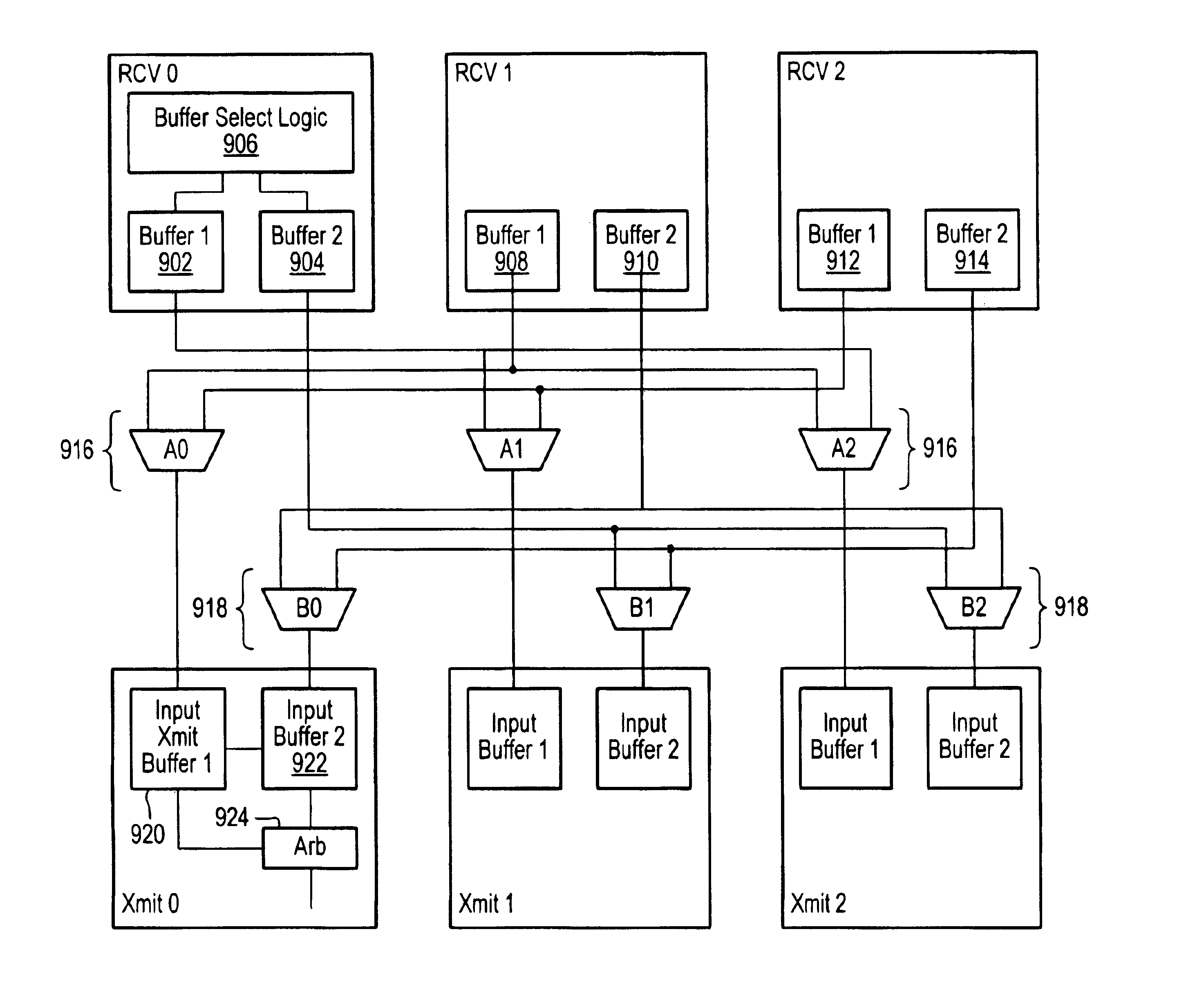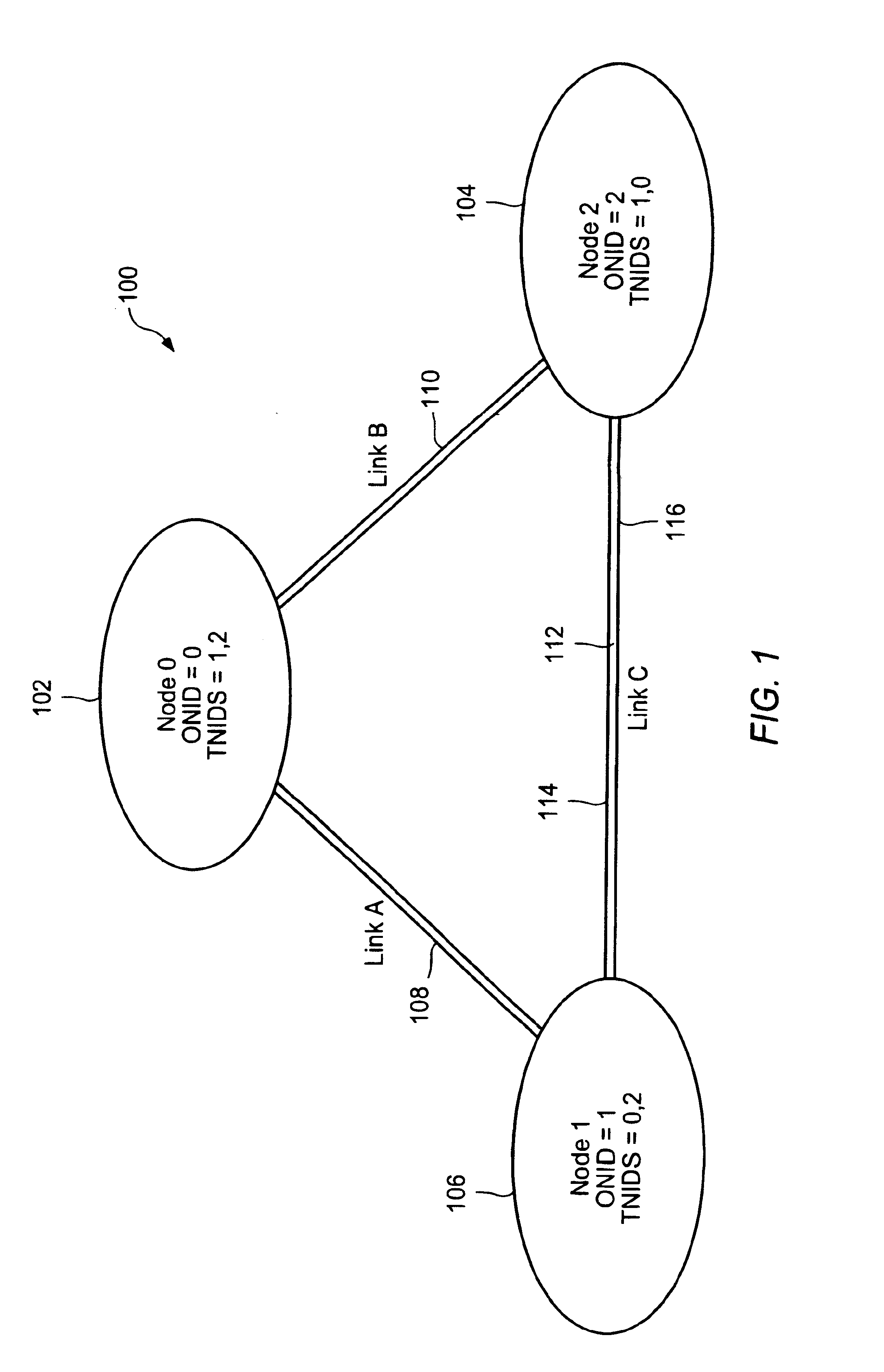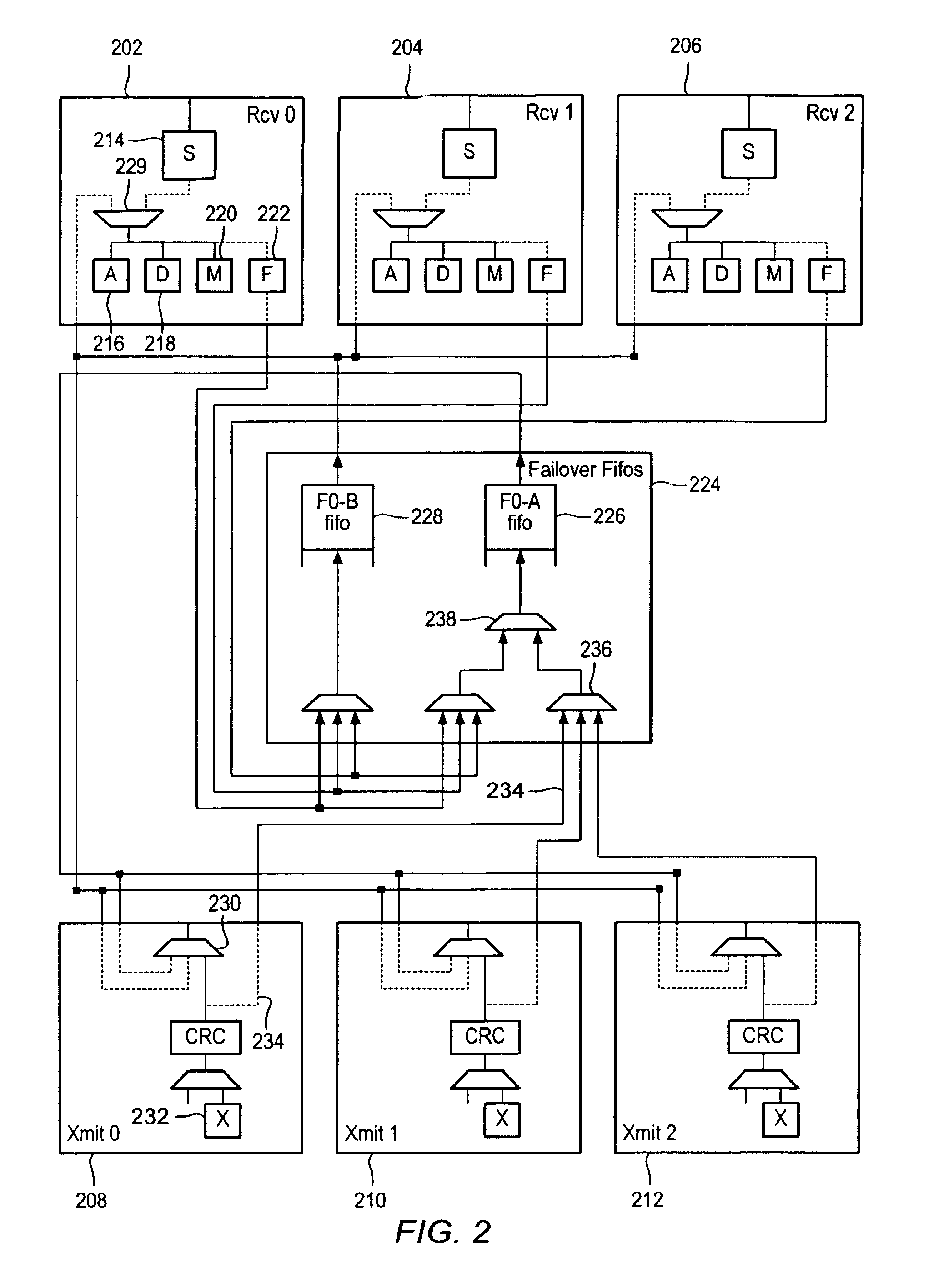High performance transmission link and interconnect
a transmission link and high-performance technology, applied in the field of data communication networks, can solve the problems of insufficient reliability of the interconnection link in most data networks, inability to inability to provide hardware or software solutions that meet the requirements of complete, error-free, fast and in-order data transmission, etc., to improve the performance of the system, increase the bandwidth of the serial link, and improve the processing speed of the pack
- Summary
- Abstract
- Description
- Claims
- Application Information
AI Technical Summary
Benefits of technology
Problems solved by technology
Method used
Image
Examples
Embodiment Construction
[0028]Reference will now be made in detail to a preferred embodiment of the invention. An example of the preferred embodiment is illustrated in the accompanying drawings. While the invention will be described in conjunction with a preferred embodiment, it will be understood that it is not intended to limit the invention to one preferred embodiment. To the contrary, it is intended to cover alternatives, modifications, and equivalents as may be included within the spirit and scope of the invention as defined by the appended claims.
[0029]A system and method for optimizing the performance of an interconnect system is described in the various figures. Also described is a system and method for automatic link failover in data networks are described in the various figures. Automatic link failover enables data packet traffic scheduled to go over a particular link to be dynamically re-routed to an alternative path if the particular link should fail. Automatic link failover of the present inve...
PUM
 Login to View More
Login to View More Abstract
Description
Claims
Application Information
 Login to View More
Login to View More - R&D
- Intellectual Property
- Life Sciences
- Materials
- Tech Scout
- Unparalleled Data Quality
- Higher Quality Content
- 60% Fewer Hallucinations
Browse by: Latest US Patents, China's latest patents, Technical Efficacy Thesaurus, Application Domain, Technology Topic, Popular Technical Reports.
© 2025 PatSnap. All rights reserved.Legal|Privacy policy|Modern Slavery Act Transparency Statement|Sitemap|About US| Contact US: help@patsnap.com



